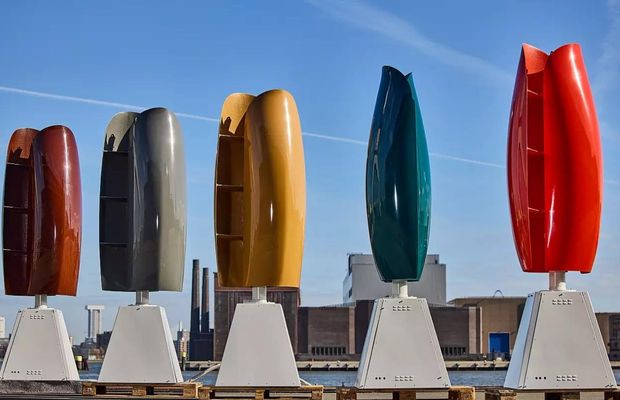Highlights :
- Tulip turbines are ideal for adoption in India: lower cost, lower space & useful in both urban & rural settings

Wind farms harness wind and generate renewable energy. But windmills are out of context for practical reasons when it comes to developing renewable energy around the city or in the city. The industry is trying to invent and innovate technology to find some breakthrough to counter the problems of size and space when we talk about generating renewable energy from wind. Tulip Turbines are one such invention that recently received praise from Indian businessman Anand Mahindra as he also suggested that new technological developments must be embraced.
Sharing a video of the innovation of tulip-shaped wind turbines, Mahindra wrote on Twitter, “I often wondered how massive allocations of land (and air, given their height) for traditional turbines would be sustainable. Multiple forms of generation should be welcomed.”
I often wondered how massive allocations of land (and air, given their height!) for traditional turbines would be sustainable? Multiple forms of generation should be welcomed. For India, tulip turbines are ideal: lower cost, lower space & useful in both urban & rural settings. pic.twitter.com/j6ychzdGmK
— anand mahindra (@anandmahindra) October 21, 2022
Mahindra further endorsed the technology for not just being favourable to urban but also rural settings of India as the country pushes for renewable. “For India, tulip turbines are ideal: lower cost, lower space & useful in both urban & rural settings,” he added.
So, who is producing them? Are they really suitable for a densely populated country like India?
Flower Turbines
Flower Turbines is a startup creating wind energy technologies. Its tulip design offers a unique combination of beauty & power. In the presence of ‘sufficient wind’, tulip turbines produce more energy than solar or traditional windmills. Flower Turbines harvest the power of the wind with its patented wind tulip that comes in three sizes – small, medium, and large.
As per the firm, the smallest model (blade Height (H): 1.15 meters; Diameter (D): 0.5 meters; and, Total height: 2 meters) is good for off-grid solutions with low energy requirements, whether off-grid or as an add-on to a solar/battery combination when sunlight is minimal. It gives a capacity in the range of 50-200 kWh.
The medium size (H: 2m; and D: 1m; and, Total height: 2.92m) variant gives a capacity in the range of 500 to 1500 kWh. It can be considered for addition to flat roofs and can also be ground-mounted near buildings.
Its largest variant (H: 4.92m; D: 2.45m; and, Total height: 6m) is ideal for much larger power requirements, such as businesses and locations that need a large production of electricity. This wind turbine comes with a 5 kW generator and is made for ground installation.
Suitability for India
A Tulip turbines produce low noise, take less space and are claimed to be highly efficient. Further, the blades can produce clean energy from any direction. It is best explained in the video that Mahindra shared, “Two vertical blades can produce clean energy from any direction. Wind enters the turbines and then hits both blades at the same time. The horizontal ribs reduce turbulence and increase efficiency. This allows the turbines to produce more energy from a lower wind speed.”
The turbines can be installed almost anywhere the wind exists, even at a lower speed. This includes regular places like houses, parking spaces, offices, shopping malls, etc. The size variations make it less rigid.
In a densely populated country like India with low land availability for conventional on-site wind turbines which require tall towers and wide vacant spaces, tulip turbines are like a panacea. A traditional wind turbine requires up to 80 acres of land and has complicated installation procedures. Windmills are generally found in rural suburbs as the massive blades are practically unsuitable and dangerous in an urban area. They must be tall and require consistent winds.
India is eyeing to make use of its offshore wind energy potential as it plans to produce over 30 GW by 2030 through offshore wind turbines. We may also see the commissioning of the first of the 1.0 GW offshore wind projects by December, 2026. Technologies like tulip turbines may further open more doors for the growth of the wind energy sector in the country.






























